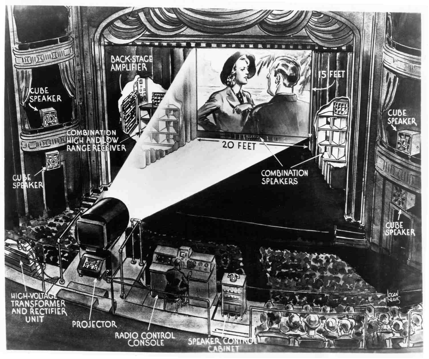Part of a good security model will involve “watermarking”, which will imprint a time and location stamp in each showing of a movie. This watermark must be invisible to the moviegoer and still be capable of being decoded and displayed by the content owner should a pirated copy of a movie be found. The watermark will have to be capable of surviving multiple digital and/or analog copy generations and not interfere with the normal scheduled screening of the movies.
There are a number of very well established encryption and security systems in daily use all over the world by banks, governments and other big institutions. These systems guard our cash and our investments and allow us to move money around in a reasonably convenient, easy to use and extremely secure way. Digital cinema should build on these established and well-understood technologies and systems.
A number of companies are now publicly suggesting different encryption schemes and security models for digital cinema. The studios’ lawyers are seriously discussing these.
Servers
Any digital cinema system will involve relatively large data storage requirements and a number of companies have demonstrated server technology for this application. Most of these systems are adaptations of computer systems used as video servers; some use the Windows NT operating system, some use UNIX and some have proprietary operating systems. They generally utilize RAID technology to safeguard the data from hard disk crashes and also offer a variety additional failure protection, including redundant power supplies and so on.
It’s expected that servers will be located at each theater and that movies will be downloaded into them a day or two prior to the first scheduled screening. Some companies have proposed that each projector get its own server in addition to a central server feeding all of the screens in a multiplex.
Hardware technology for fileservers is extremely advanced and we can expect that the servers used in a digital cinema system will be robust, reliable and even fairly inexpensive. The software, however, required to run the movies may be a different matter.
Software
This author believes that the single greatest technical weakness in any digital cinema system will be the software that schedules, handles, moves and plays the movies. This software will have to be very easy to use and will have to work almost completely automatically with very little operator intervention. It must be part of a networked system that may accept commands and schedule changes from remote (hopefully properly authorized) locations. It will have to log errors, successful showings and possibly even track audience numbers for each showing. It may even have to communicate with the theaters’ cash register and ticketing systems and the movie distributors’ accounting systems. It must be perfectly robust and fault-tolerant and it must never crash. Show of hands, please, for everyone who has worked with software demonstrating these characteristics?
